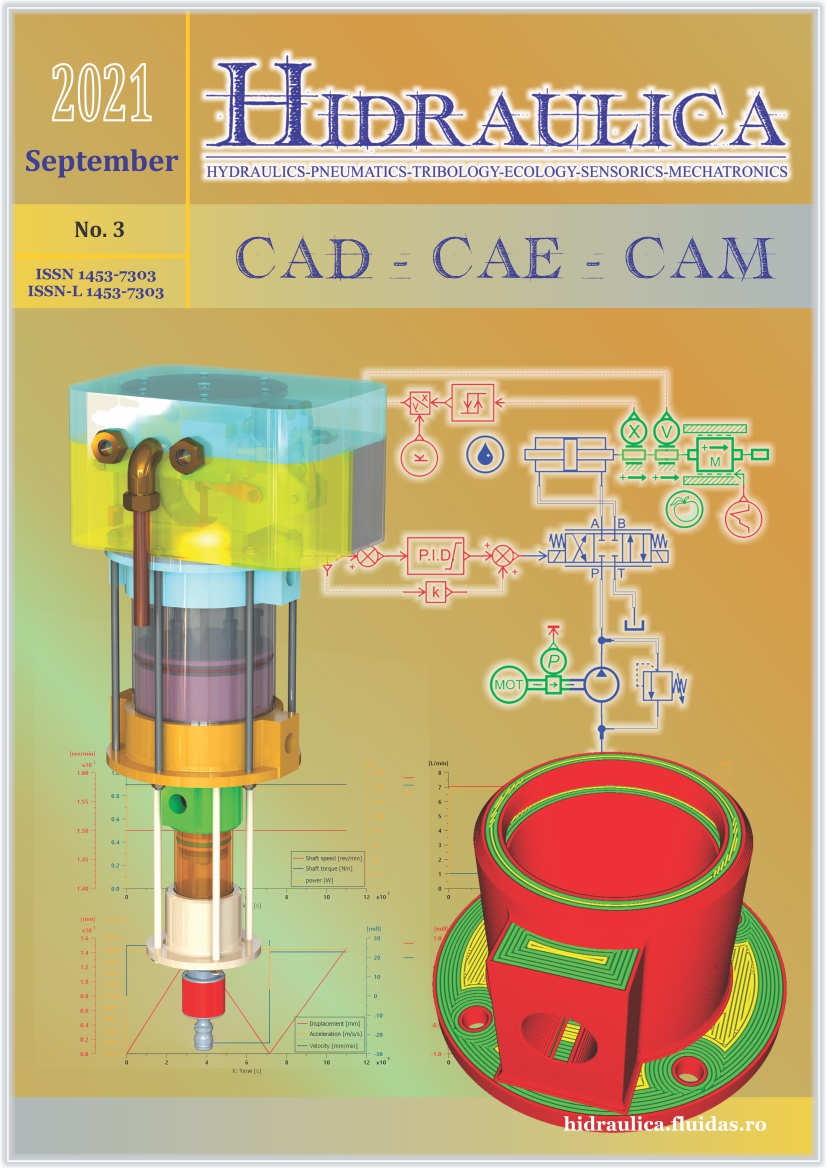Overview of Human-Machine Interaction of Pneumatically Actuated Industrial Exoskeletons
Authors: Csaba HAJDU, Flóra HAJDU, Rajmund KUTI
Increasing human physical strength is a long researched area. Mainly military applications have been developed in order to increase the load-bearing capacity of the soldiers. However, in addition to military developments, healthcare and industrial applications are also gaining prominence. In this paper, the development directions of industrial exoskeletons with an emphasis on pneumatically operated devices are reviewed. An essential part of this paper is … (read more)
Heat Treatment Influence of Alloy 5083 on Cavitational Erosion Resistance
Authors: Dionisie ISTRATE, Cristian GHERA, Laura SĂLCIANU, Ilare BORDEAȘU, Brândușa GHIBAN, Dumitru Viorel BĂZĂVAN, Lavinia Mădălina MICU, Daniel-Cătălin STROIȚĂ, Daniel OSTOIA
Aluminum based alloy type 5083 have a large applicability in the area of automobile and naval constructions (such as: Shipbuilding, Rail cars, Vehicle corps, Type truck body, Mine skips and cages, Pressure vessel). The components of these parts are sometimes required for high aggressiveness factors. Thus, during operation, both the pump rotors and the propellers are subjected to hydrodynamic stresses of the cavity which, by erosion, leads to their removing, completely or until repair. At the same time, .… (read more)
Impact of Yttria Reinforced Nanolubricants onto the Tribological Properties
Authors: Álmos Dávid TÓTH, Ádám István SZABÓ, Jan ROHDE-BRANDENBURGER, Rajmund KUTI
The continuous improvement of the tribological properties of lubricants is a vital task for engineers, not only in the case of internal combustion engine applications. The researchers are working on investigating different materials to find the possible lubricant additives of the future. One of the possibilities can be the different nanoparticles. Their spherical geometry with nanoscale can provide excellent tribological properties but they must be thoroughly investigated before using them in real machines. This paper introduces the experimental results with spherical yttria nanoparticles as tribological additives in different lubricant types. Ball-on-disc tribometer measurements were carried out to define … (read more)
Study of Electro-Pneumatic Circuits with Magnetic Proximity Switches
Authors: Mariana PANAITESCU, Remus COJOCARU, Tiberiu AXINTE, Cătălin FRĂȚILĂ, Roxana DAMIAN, Mihai DIACONU
In this paper, we study electro-pneumatic systems with magnetic proximity switches. Besides, magnetic proximity switches are sensors compatible with T-Slot. These sensors with LED Indicator have the following characteristics: supply voltage 24 V dc, minimum operating is -400C and maximum operating temperature is +850C. The study of pneumatic and electro-pneumatic circuits is performed … (read more)
Defining the Main Parameters of a Darrieus Type Wind Turbine with a Power of 1 kW
Authors: Valeriu DULGHERU, Cătălin DUMITRESCU, Edmond MAICAN, Oleg CIOBANU, Radu RĂDOI
Utilizing huge amounts of cheap wind requires efficient, predictable, environmentally friendly conversion systems. Vertical-axis wind turbines are an area of less investigated wind energy conversion systems. Thanks to advantages over horizontal-axis wind turbines, vertical-axis wind turbines are becoming convenient for certain distinct regions, especially in urban and suburban areas. The article presents the argumentation of the geometric parameters of … (read more)
A Review of Quantification of Noise in Engines
Authors: Sujoy NAIR, Raman SINGH
During the decade of 1970’s, introduction of more stringent noise control regulations led to more attention being paid towards the acoustic performance of engines. Priede analyzed a relationship between development of in cylinder pressure and subsequent noise emissions from engines. Kamal focused his work on finite element analysis of individual engine components for … (read more)
Research regarding Electro-Pneumatic Systems with Pneumatic Motor
Authors: Iulian Claudiu DUȚU, Tiberiu AXINTE, Lidia CALANCEA, Cătălin FRĂȚILĂ, Mihai DIACONU, Remus COJOCARU
In this paper, we study electro-pneumatic systems with air motors. Besides the pneumatic motors, the cylinders are the actuators which are the most used in electro-pneumatic systems. The study of pneumatic and electro-pneumatic circuits is performed in the FluidSim from Festo. At the beginning, we make simple pneumatic systems with single or two air motors. We continue with … (read more)
Combustion Process Analysis in Engines Using Vibration Signals
Authors: Faisal O. MAHROOGI, S. NARAYAN
This work analysis the scope of non-intrusive measurements by engine vibration monitoring. These signals complex in nature due to contributions of various sources like valve operations, fuel pump operation, combustion events and piston motion. The vibration signals obtained from tests has been analysed into various components. Tests were done to select an optimum location for placement of accelerometer to measure engine block vibrations, which are sensitive to combustion contribution due to … (read more)
A Review of NVH Testing of Engines
Authors: Raman SINGH, Sujoy NAIR
The presented work establishes benefits of using various intrusive as well as non-intrusive methods to analyze pressure, noise and vibrations signals from a dual cylinder diesel engine. This work investigated the effects of change in various injection parameters on development of in cylinder pressure, noise emissions and engine block vibrations. Various contributing NVH sources in engines include … (read more)
Strategy for Implementation and Use of Monitoring Systems for Gear-Motors
Authors: Paul LĂCĂTUȘ, Mihai IONEL, Gabriela MATACHE, Valentin BARBU
The article describes the strategy of implementation and use of a monitoring system that specifically targets the moto reducer assemblies used in many equipment and machinery in various fields. The article presents the architecture of a monitoring system and … (read more)
A Review of Structural Attenuation in Combustion Engines
Authors: S. NARAYAN, Raman SINGH
The rate of pressure (which mainly depends on the ignition delay period) and quantities of combustion gas formed during this period are a key parameter to analyze combustion-based noise. A shorter delay period means lesser amount of combustible gas formed and hence lesser combustion noise. Hence, delay period must be reduced as much as possible for effective reduction of combustion noise. Structure and layout of engine also plays a significant role. There are many approaches to control … (read more)
